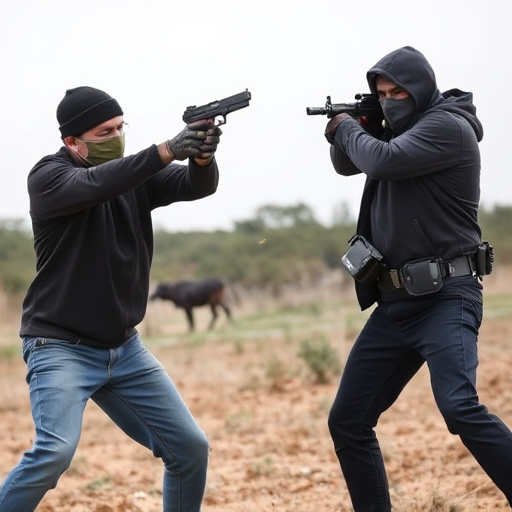Understanding electrical pulse frequency (EPF) is crucial for evaluating the effectiveness and legality of stun guns, particularly the most powerful legal stun weapons. Higher frequencies (15-20 kHz and above) penetrate deeper into the body, disrupting muscle control faster and making them safer. Popular models like Taser X26P, Olight S15 Pro, and StunMaster SM-2000 offer varying EPF levels for swift and effective protection. Testing and certification ensure these weapons meet safety, efficacy, and legal standards. Future advancements in EPF technology aim to create even more powerful yet safe stun guns, adapting to various scenarios with advanced sensors and AI algorithms.
In the realm of personal defense, stun guns have emerged as a popular choice for individuals seeking effective yet non-lethal force options. At the heart of their functionality lies electrical pulse frequency—a critical parameter dictating their power and performance. This article explores the intricate world of stun gun technology, focusing on understanding pulse frequencies and their impact on both efficiency and safety. We delve into legal considerations surrounding the most powerful legal stun weapons, dissect popular models, and glimpse into future innovations aimed at enhancing their effectiveness while navigating regulatory landscapes.
- Understanding Electrical Pulse Frequency: The Backbone of Stun Guns
- Legal Considerations: Defining Most Powerful in Stun Weapons
- How Stun Gun Pulse Frequencies Affect Efficiency and Safety
- Popular Stun Gun Models and Their Pulse Frequencies
- Testing and Certification: Ensuring Quality and Power
- Future Trends: Enhancing Stun Gun Technology for Legal Use
Understanding Electrical Pulse Frequency: The Backbone of Stun Guns
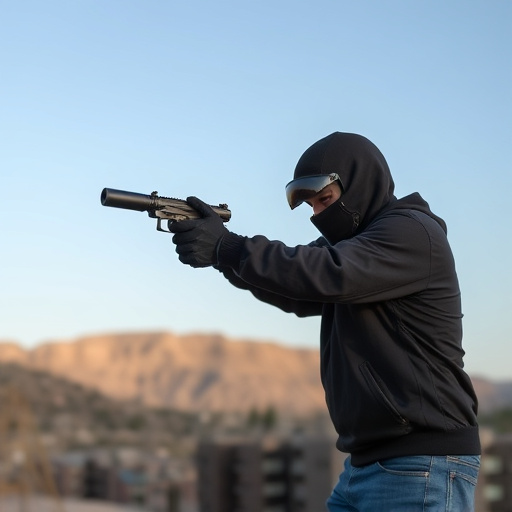
Understanding Electrical Pulse Frequency is key to comprehending the performance and effectiveness of stun guns, especially when it comes to the most powerful legal stun weapons available. These devices emit a series of electrical pulses designed to disrupt muscle control in an opponent, rendering them temporarily incapacitate. The frequency of these pulses plays a critical role in achieving the desired effect. Higher pulse frequencies can result in more intense and rapid shocks, making them ideal for close-quarters combat where speed and power are paramount.
Stun guns with adjustable pulse settings offer users versatility, allowing them to select the appropriate frequency based on their needs and legal restrictions. This adaptability ensures that individuals can deploy the most powerful legal stun weapons while adhering to local regulations. By understanding the relationship between pulse frequency and stun gun performance, users can make informed decisions when selecting a device that suits their specific self-defense requirements.
Legal Considerations: Defining Most Powerful in Stun Weapons
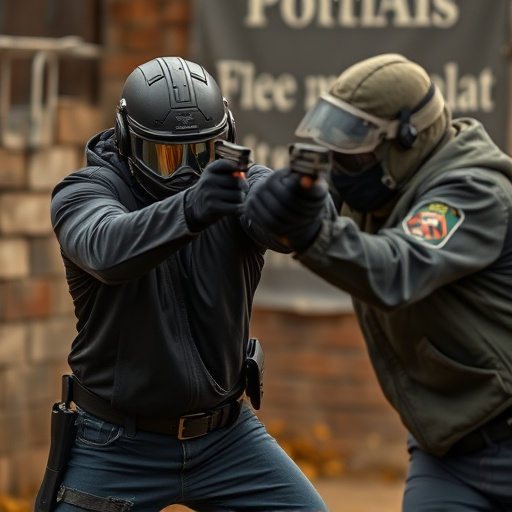
When discussing the most powerful legal stun weapons, it’s crucial to understand that the definition of “power” isn’t just about joules or voltage—it’s also heavily influenced by legal frameworks. The legality of stun guns varies widely across countries and states, with many regions having strict regulations on their use, possession, and power output. For instance, some jurisdictions limit stun weapons to those with a certain maximum volt level or current, while others prohibit them altogether except for law enforcement use.
This legal context plays a significant role in determining what can be considered the “most powerful” stun weapon legally available. Manufacturers often have to balance the desire for higher power outputs with compliance requirements, leading to a complex landscape where even the most advanced stun guns might not be the strongest in absolute terms if they don’t meet legal standards. As such, anyone interested in acquiring a stun weapon should first familiarize themselves with local laws to ensure they stay within the legal boundaries.
How Stun Gun Pulse Frequencies Affect Efficiency and Safety
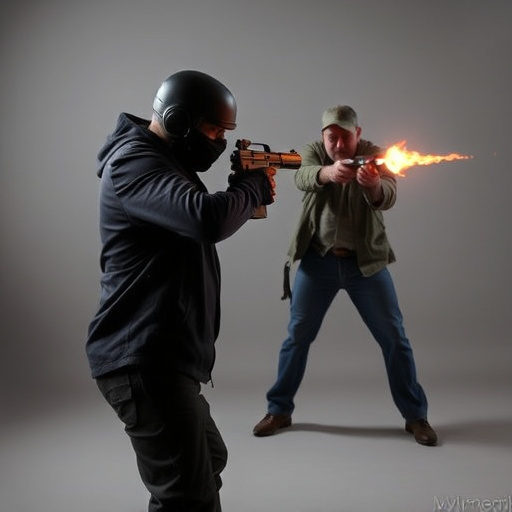
The electrical pulse frequency in stun guns plays a critical role in determining both their efficiency and safety as self-defense tools. Stun guns that employ higher pulse frequencies, typically ranging from 15 to 20 kHz, are considered more effective for several reasons. Higher frequencies allow for deeper penetration of the electrical current into the body, disrupting muscle control and causing immobilization faster. This rapid action is particularly useful in close-quarters encounters where speed and agility are paramount.
Moreover, most powerful legal stun weapons designed with advanced pulse technologies offer enhanced safety features. The high-frequency pulses minimize the risk of serious injury to bystanders or the user, as they reduce the overall current flow compared to lower frequencies. This makes them a safer alternative for individuals seeking personal protection without causing permanent harm. Such innovations highlight the ongoing efforts to balance effectiveness and safety in non-lethal self-defense solutions, particularly within the legal framework governing stun weapon ownership and use.
Popular Stun Gun Models and Their Pulse Frequencies
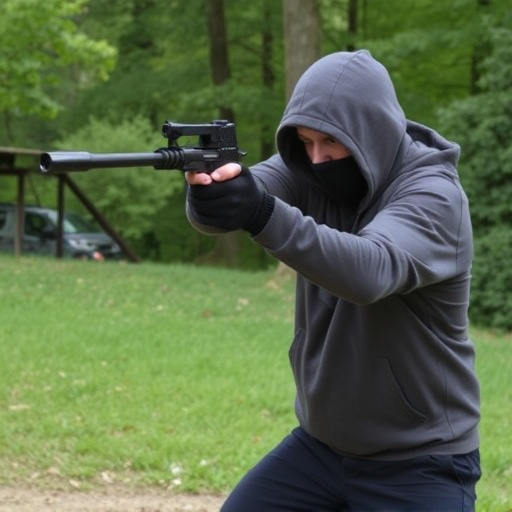
When it comes to the most powerful legal stun weapons, several models stand out for their efficacy and popularity. Many top-tier stun guns on the market utilize high-voltage, low-current electrical pulses to disable an attacker temporarily. For instance, models like the Taser X26P and the Olight S15 Pro deliver powerful jolts with frequencies ranging from 150 to 300 kilohertz (kHz). These frequencies are designed to disrupt muscle control and cause a strong, incapacitating shock without causing significant harm.
Another popular choice among law enforcement and self-defense enthusiasts is the StunMaster SM-2000, which boasts an impressive pulse frequency of up to 4 million cycles per second (MHz). This extremely high frequency ensures that the stun gun provides a fast and effective response in emergency situations. Each of these models has been meticulously designed to offer users the best protection possible while adhering to legal standards regarding stun weapon use.
Testing and Certification: Ensuring Quality and Power
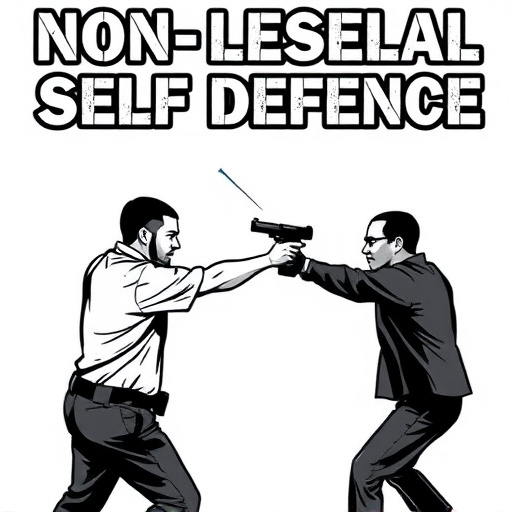
Testing and certification play a critical role in ensuring the quality, safety, and effectiveness of what are often considered the most powerful legal stun weapons. Reputable manufacturers subject their devices to rigorous testing protocols to guarantee performance within specified parameters. This includes evaluating the electrical pulse frequency—the number of pulses per second—to ensure it delivers enough shock to incapacitate a target without causing serious harm.
Certifications from recognized bodies further validate the reliability and power of stun guns. These certifications often involve independent testing for voltage output, pulse width, and other factors that contribute to the weapon’s overall performance. By adhering to strict standards, manufacturers ensure that their most powerful legal stun weapons meet the needs of users while remaining compliant with applicable laws and regulations.
Future Trends: Enhancing Stun Gun Technology for Legal Use

As technology advances, the future of stun gun design looks promising for law enforcement and self-defense purposes while maintaining legal compliance. The development of more powerful yet precise electrical pulse frequency (EPF) weapons is at the forefront of this evolution. Researchers are focusing on creating devices that deliver targeted, high-intensity shocks, minimizing collateral damage and ensuring user safety. These future stun guns aim to be the most powerful legal stun weapons available, offering an effective deterrent against potential threats without causing permanent harm.
The trend leans towards integrating advanced sensors and AI algorithms to adapt to different scenarios, making each stun gun a dynamic tool. The goal is to provide officers and civilians with a reliable, legal self-defense mechanism that complies with evolving regulations. Continuous improvements in EPF technology promise to enhance the effectiveness of these devices, solidifying their place as cutting-edge tools for maintaining public safety while adhering to ethical standards.
Stun guns, with their electrical pulse frequencies, offer a unique blend of power and safety. As we’ve explored, understanding the intricacies of pulse frequency is key in navigating the market for the most effective and legally compliant most powerful legal stun weapons. Future advancements in technology promise to enhance safety and performance even further, ensuring individuals have access to reliable personal defense tools. When choosing a stun gun, it’s crucial to consider not just its power, but also the specific needs of users and evolving legal landscapes.
